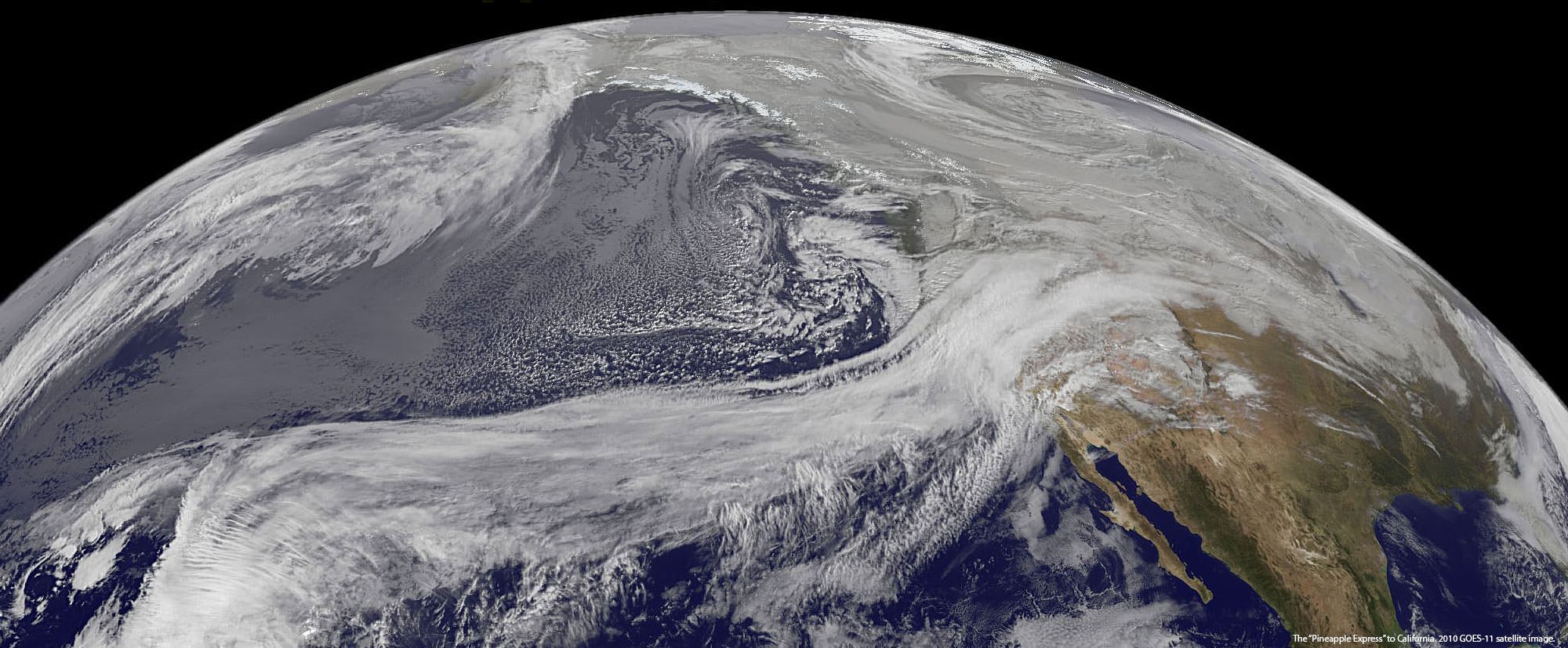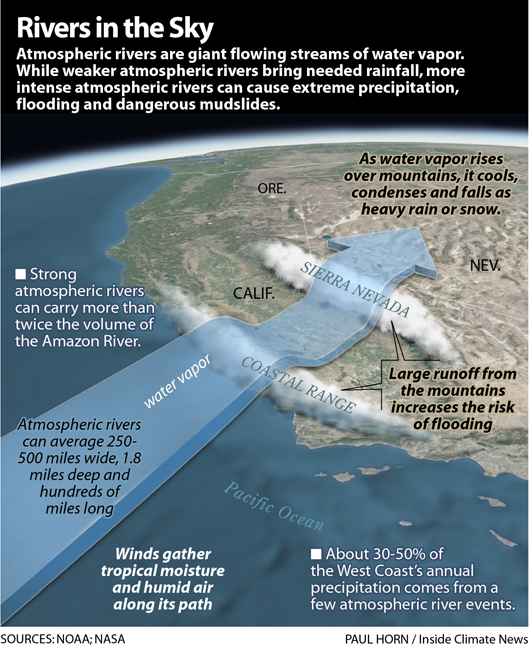Description

Disclaimer: Copyright infringement not intended.
Context
Los Angeles faces rare 'high risk' of flash flooding as atmospheric river takes aim at Southern California.
Details
Atmospheric rivers
- Atmospheric rivers are narrow regions in the atmosphere that transport large amounts of water vapour, similar to rivers in the sky.
Formation
- Atmospheric rivers typically form over tropical regions due to warm temperatures causing ocean water to evaporate and rise into the atmosphere. Strong winds then carry the water vapour through the atmosphere.
- As atmospheric rivers move over land, the water vapour rises higher, cools into water droplets, and falls as precipitation.

Areas of occurrence
- They are most common in the extratropical North Pacific/Atlantic, southeastern Pacific, and South Atlantic oceans, often making landfall on the west coasts of North and South America.
- Other regions that experience atmospheric river landfalls include Greenland, Antarctica, and the south-central United States.
Pineapple Express
- One well-known atmospheric river is the "Pineapple Express," which picks up warm, moist air near Hawaii and can cause heavy rain and snow when it hits land in the Western United States and Canada. In California, it can cause up to 5 inches of rain in a day.
Impact of atmospheric rivers
- Atmospheric rivers can have significant impacts on the areas they affect. The heavy rainfall associated with these systems can cause flooding, landslides, and mudslides, leading to property damage and loss of life.
- In addition, atmospheric rivers can disrupt water supply by overwhelming reservoirs and other water infrastructure.
- In some cases, these systems can also cause drought-like conditions by pulling moisture away from areas that rely on it for agriculture or other industries.
Significance
- However, it is important to note that not all atmospheric rivers cause damage. Many are weak systems that provide beneficial rain or snow that is crucial to the water supply.
- Some regions rely on these systems for a significant portion of their annual precipitation.
- Understanding the potential impacts of atmospheric rivers is important for preparedness and management, as these systems are an essential component of the Earth's water cycle.

How will climate change impact it?
atmospheric rivers, with some regions of the world expected to see an increase in the frequency and intensity of these systems, particularly in the mid-latitudes, reports The Indian Express.
- This could have significant implications for water resources management, flood control, and other areas of public policy.
- The warming of the oceans due to climate change is expected to increase the amount of water vapour available for atmospheric rivers to transport, leading to heavier rainfall and greater potential for flooding.
- This could have a significant impact on regions that are already susceptible to these types of events, as well as on infrastructure that is not designed to handle such intense precipitation.
Conclusion
The implications of atmospheric rivers on water resources, extreme weather events, and climate change underscore the need for continued research and proactive measures.
|
PRACTICE QUESTION
The term “Pineapple Express," often mentioned in news is associated with which of the following?
- Atmospheric phenomena.
- Transcontinental railway transport.
- Agricultural Product.
- Pipeline project across European Union.
Answer 1
|















